 W
WThis is a timeline of the Yuan dynasty (1271–1368).
 W
WThe Yuan dynasty, officially the Great Yuan, was a successor state to the Mongol Empire after its division and a ruling dynasty of China established by Kublai Khan, leader of the Mongol Borjigin clan, lasting from 1271 to 1368. In Chinese historiography, this dynasty followed the Song dynasty and preceded the Ming dynasty.
 W
WThe 1344 Yellow River flood was a major natural disaster during the Yuan dynasty of Imperial China. The impact was devastating both for the peasants of the area as well as the leaders of the empire. The Yuan dynasty was waning, and the emperor forced enormous teams to build new embankments for the river. The terrible conditions helped fuel rebellions that led to the founding of the Ming dynasty.
 W
WThe Yuan dynasty was a vast empire founded by Mongol leader Kublai Khan in China. During its existence, its territory was divided into the Central Region (腹裏) governed by the Central Secretariat and places under control of various provinces (行省) or Branch Secretariats (行中書省), as well as the region under the Bureau of Buddhist and Tibetan Affairs. In addition, the Yuan emperors held nominal suzerainty over the western Mongol khanates, but in reality none of them were governed by the Yuan dynasty due to the division of the Mongol Empire.
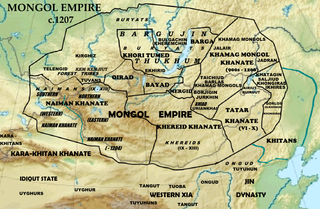 W
WA Borjigin is a member of the sub-clan, which started with Yesugei, of the Kiyat clan. Yesugei's descendants were thus said to be Kiyat-Borjigin. The senior Borjigid provided ruling princes for Mongolia and Inner Mongolia until the 20th century. The clan formed the ruling class among the Mongols and some other peoples of Central Asia and Eastern Europe. Today, the Borjigid are found in most of Mongolia, Inner Mongolia and Xinjiang, although genetic research has shown that descent from Genghis Khan is common throughout Central Asia and other regions.
 W
WThe 1290 Chihli earthquake occurred on 27 September with an epicenter near Ningcheng, Zhongshu Sheng, Yuan Empire. This region is today administered as part of Inner Mongolia, China. The earthquake had an estimated surface wave magnitude of 6.8 and a maximum felt intensity of IX (Violent) on the Mercalli intensity scale. One estimate places the death toll at 7,270, while another has it at 100,000.
 W
WThe Yuan dynasty was a Mongol khanate that ruled over China from 1271 to 1368, after the Mongols conquered the Western Xia, Western Liao, and Jin dynasties they allowed for the continuation of locally minted copper currency, as well as allowing for the continued use of previously created and older forms of currency, while they immediately abolished the Jin dynasty’s paper money as it suffered heavily from inflation due to the wars with the Mongols. After the conquest of the Song dynasty was completed the Mongols started issuing their own copper coins largely based on older Jin dynasty models, though eventually the preferred Mongol currency became the Jiaochao and silver sycees, as coins would eventually fall largely into disuse. Although the Mongols at first preferred to have every banknote backed up by gold and silver, high government expenditures forced the Yuan to create fiat money in order to sustain government spending.
 W
WA conquest dynasty in the history of imperial China refers to a dynasty established by non-Han peoples that ruled parts or all of the China proper, most notably the Mongol-founded Yuan dynasty and the Manchu-founded Qing dynasty.
 W
WThe Diaoyucheng, or Diaoyu Fortress, is located on the Diaoyu Mountain in Heyang Town, Hechuan District, Chongqing, is known for its resistance to the Mongol armies in the latter half of the Song dynasty. The death of Mongol leader Möngke Khan during the siege of Diaoyucheng resulted in the immediate withdrawal of Mongol troops from Syria and East Asia.
 W
WDongnyeong Prefectures was a colony which set in the northwest Korean Peninsula by the Mongolian Yuan dynasty between 1259 and 1290.
 W
WGiven textual and archaeological evidence, it is thought that thousands of Europeans lived in Imperial China during the period of Mongol rule. These were people from countries traditionally belonging to the lands of Christendom during the High to Late Middle Ages who visited, traded, performed Christian missionary work, or lived in China. This occurred primarily during the second half of the 13th century and the first half of the 14th century, coinciding with the rule of the Mongol Empire, which ruled over a large part of Eurasia and connected Europe with their Chinese dominion of the Yuan dynasty (1271–1368). Whereas the Byzantine Empire centered in Greece and Anatolia maintained rare incidences of correspondence with the Tang, Song and Ming dynasties of China, the Roman papacy sent several missionaries and embassies to the early Mongol Empire as well as to Khanbaliq, the capital of the Mongol-led Yuan Dynasty. These contacts with the West were only preceded by rare interactions between the Han-period Chinese and Hellenistic Greeks and Romans.
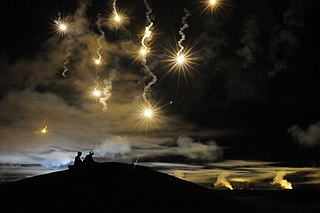 W
WA flare, also sometimes called a fusee, is a type of pyrotechnic that produces a bright light or intense heat without an explosion. Flares are used for distress signaling, illumination, or defensive countermeasures in civilian and military applications. Flares may be ground pyrotechnics, projectile pyrotechnics, or parachute-suspended to provide maximum illumination time over a large area. Projectile pyrotechnics may be dropped from aircraft, fired from rocket or artillery, or deployed by flare guns or handheld percussive tubes.
 W
WGoryeo under Mongol rule refers to the rule of the Mongol Empire, specifically the Mongol-ruled Yuan dynasty over the Korean Peninsula from about 1270 to 1356. After the Mongol invasions of Korea and the capitulation of Korea's Goryeo dynasty in the 13th century, Goryeo became a semi-autonomous vassal state and compulsory ally of the Yuan dynasty for about 80 years. The ruling line of Goryeo was permitted to rule Korea as a vassal of the Yuan, which established Zhengdong Province in Korea. Members of the Goryeo royal family were taken to Dadu, and typically married to spouses from the Yuan imperial house. As a result, princes who became monarchs of Goryeo during this period were effectively imperial sons in-law (khuregen). Yuan overlordship ended in the 1350s when the Yuan dynasty itself started to crumble and King Gongmin of Goryeo began to push the Mongol garrisons back.
 W
WThe Heilongjiang hand cannon or hand-gun is a bronze hand cannon manufactured no later than 1288 and is the world's oldest confirmed surviving firearm. It weighs 3.55 kg and is 34 centimeters long. The Heilongjiang hand cannon was excavated during the 1970s in Banlachengzi, a village in Acheng District, Heilongjiang province, China. It was found alongside other bronze artifacts made in the style of the Jurchen Jin Dynasty. The hand cannon was probably used in battles fought nearby Banlachengzi in 1287 and 1288. The History of Yuan states that a Jurchen commander by the name of Li Ting led a group of soldiers equipped with hand cannons into a military camp in 1288, as part of an anti-rebellion campaign for the Yuan dynasty. The cannon currently resides at the Heilongjiang Provincial Museum in Harbin, China.
 W
WThe establishment of the Yuan dynasty in China in the 13th century dramatically increased the number of Muslims in China. Foreigners in China were given an elevated status in the hierarchy of the new regime. The impact on China by its Muslims at this time, including the advancement of Chinese science and the designing of Dadu, is vast and largely unknown. It is estimated that in the 14th century, the total population of Muslims in China was 4,000,000.
 W
WJiaochao is a Chinese word for banknote first used for the currency of the Jurchen Jin dynasty and later by the Yuan dynasty.
 W
WKhanbaliq or Dadu (元大都) was the winter capital of the Yuan dynasty, the main center of the Mongol Empire founded by Kublai Khan in what is now Beijing, also the capital of China today. It was located at the center of modern Beijing. The Secretariat (中书省) directly administered the Central Region (腹裏) of the Yuan Empire and dictated policies for the other provinces. Kublai and his successors also claimed supremacy over the entire Mongol Empire following the death of Möngke Khan in 1259. Over time the unified empire gradually fragmented into a number of khanates.
 W
WManchuria under Yuan rule refers to the Yuan dynasty's rule over Manchuria, including modern Northeast China and Outer Manchuria from the beginning to the end of the dynasty. Mongol rule over Manchuria was established during the Mongol Empire's conquest of the Jurchen Jin dynasty in the early 13th century. It became a part of the Yuan dynasty when the dynasty was founded by the Mongol leader Kublai Khan. Even after the overthrow of the Mongol Yuan dynasty by the Ming dynasty founded by native Chinese in 1368, Manchuria was still controlled by the Northern Yuan dynasty based in Mongolia for almost 20 years, until it was conquered by the Ming during the Ming military campaign against Naghachu and put under Ming rule.
 W
WThe military of the Yuan dynasty (1271–1368) were the armed forces of the Yuan dynasty, a fragment of the Mongol Empire created by Kublai Khan in China. The forces of the Yuan were based on the troops that were loyal to Kublai after the Division of the Mongol Empire in 1260. At first this Tamma, a frontier army drawn from all Mongol tribes for conquest of China, had no central organisation but was rather a loose collection of local warlords and Mongol princely armies. However the army was gradually reformed by Kublai Khan into a more systematic force.
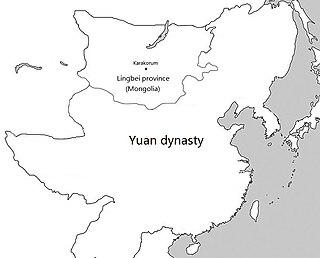 W
WThe Yuan dynasty ruled over the Mongolian steppe, including both Inner and Outer Mongolia as well as part of southern Siberia, for roughly a century between 1271 and 1368. The Mongolian Plateau is where the ruling Mongols of the Yuan dynasty as founded by Kublai Khan came from, thus it enjoyed a somewhat special status during the Yuan dynasty, a division of the Mongol Empire, although the capital of the dynasty had been moved from Karakorum to Khanbaliq since the beginning of Kublai Khan's reign, and Mongolia had been turned into a province by the early 14th century.
 W
WThe ʼPhags-pa script is an alphabet designed by the Tibetan monk and State Preceptor Drogön Chögyal Phagpa for Kublai Khan, the founder of the Yuan dynasty, as a unified script for the written languages within the Yuan. The actual use of this script was limited to about a hundred years during the Mongol Yuan dynasty, and it fell out of use with the advent of the Ming dynasty.
 W
WDuring the Mongol-ruled Yuan dynasty (1271–1368), many scientific and technological advancements were made in areas such as mathematics, medicine, printing technology, and gunpowder warfare.
 W
WSemu is the name of a caste established by the Yuan dynasty. The Semu categories refers to people who come from Central and West Asia, it is told that there are 31 categories among them. They had come to serve the Yuan dynasty by enfranchising under the dominant Mongol caste. The Semu were not a self-defined and homogeneous ethnic group per se, but one of the four castes of the Yuan dynasty: the Mongols, Semu, the "Han" and the Southerners. Among the Semu were Buddhist Turpan Uyghurs, Tanguts and Tibetans; Nestorian Christian tribes like the Ongud; Alans; Muslim Central Asian Persian and Turkic peoples including the Khwarazmians and Karakhanids; West Asian Arab, Jewish and other minor groups who are from even further west.
 W
WSermon on Mani's Teaching of Salvation is a Yuan dynasty silk hanging scroll, measuring 142 × 59 centimetres and dating from the 13th century, with didactic themes: a multi-scenic narrative that depicts Mani's Teachings about the Salvation combines a sermon subscene with the depictions of soteriological teaching in the rest of the painting.
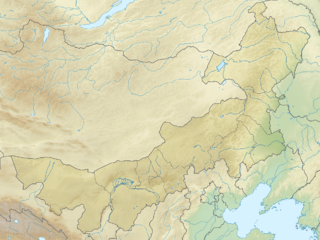 W
WShangdu, also known as Xanadu, was the summer capital of the Yuan dynasty of China that ruled the Mongol Empire, before Kublai decided to move his throne to the former Jin dynasty capital of Zhōngdū, which was renamed Khanbaliq, present-day Beijing. Shangdu then became his summer capital. It is located in the present-day Zhenglan Banner, Inner Mongolia.
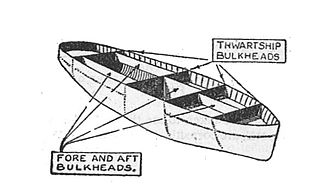 W
WFloodability is the susceptibility of a ship's construction to flooding. It also refers to the ability to intentionally flood certain areas of the hull for damage control purposes, or to increase stability, which is particularly important in combat vessels, which often face the possibility of serious hull breach due to enemy action, and which rely on well-trained Damage Controlmen to equalize and then stop flooding of the hull.
 W
WThis article is about the society of the Mongol Empire.
 W
WA teapot is a vessel used for steeping tea leaves or a herbal mix in boiling or near-boiling water, and for serving the resulting infusion which is called tea. Dry tea is available either in tea bags or as loose tea, in which case a tea infuser or tea strainer may be of some assistance, either to hold the leaves as they steep or to catch the leaves inside the teapot when the tea is poured. Teapots usually have an opening with a lid at their top, where the dry tea and hot water are added, a handle for holding by hand and a spout through which the tea is served. Some teapots have a strainer built-in on the inner edge of the spout. A small air hole in the lid is often created to stop the spout from dripping and splashing when tea is poured. In modern times, a thermally insulating cover called a tea cosy may be used to enhance the steeping process or to prevent the contents of the teapot from cooling too rapidly.
 W
WTibet under Yuan rule refers to the Yuan dynasty's rule over Tibet from approximately 1270 to 1354. During the Yuan rule of Tibet, the region was structurally, militarily and administratively controlled by the Mongol-led Yuan dynasty of China, a division of the Mongol Empire. In the history of Tibet, Mongol rule was established after Sakya Pandita got power in Tibet from the Mongols in 1244, following the 1240 Mongol conquest of Tibet led by the Mongol general with the title doord darkhan. It is also called the Sakya dynasty after the favored Sakya school of Tibetan Buddhism.
 W
WThe oldest extant gun bearing a date of production is the Xanadu Gun, so called because it was discovered in the ruins of Xanadu (Shangdu), the summer palace of the Yuan dynasty in Inner Mongolia, China. The Xanadu Gun is 34.7 cm in length and weighs 6.21 kg, its muzzle is flared outwards, slightly bowl-shape, and called by Chinese as 碗口铳. Its dating is based on archaeological context and a straightforward inscription containing an era name and year that correspond with the Gregorian Calendar at 1298. Not only does the inscription contain the era name and date, it also includes a serial number and manufacturing information which suggests that gun production had already become systematized, or at least become a somewhat standardized affair by the time of its fabrication. The design of the gun includes axial holes in its rear which some speculate could have been used in a mounting mechanism. Like most early guns with the possible exception of the Western Xia gun, it is small, weighing just over six kilograms and thirty-five centimeters in length. Although the Xanadu Gun is the most precisely dated gun from the 13th century, other extant samples with approximate dating may be older.
 W
WThe Yuan dynasty in Inner Asia was the domination of the Yuan dynasty in Inner Asia in the 13th and the 14th centuries. The Genghisid rulers of the Yuan came from the Mongolian steppe, and the Mongols under Kublai Khan established the Yuan dynasty (1271–1368) based in Khanbaliq. The Yuan was a Chinese dynasty that incorporated many aspects of Mongolian and Inner Asian political and military institutions.
 W
WZhangpu County is a county of Zhangzhou prefecture-level city in far southern Fujian province, People's Republic of China. The county seat is located in the town of Sui'an (绥安镇).